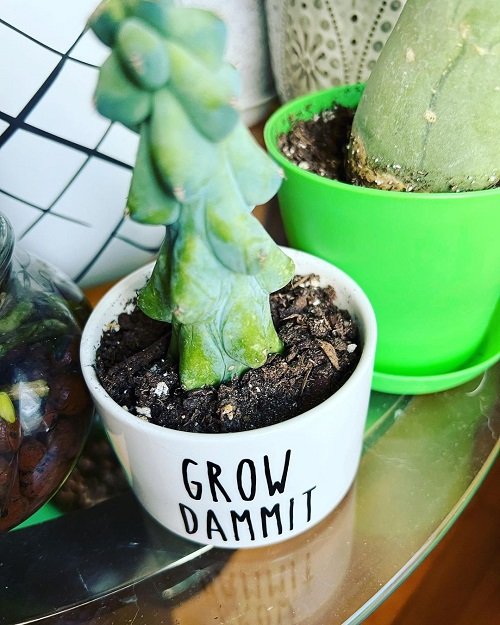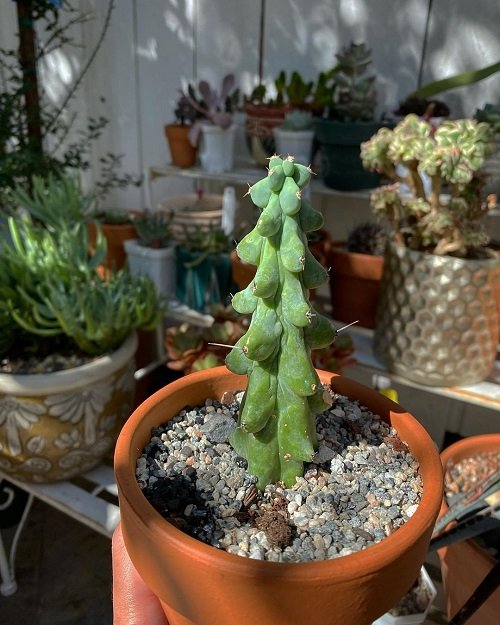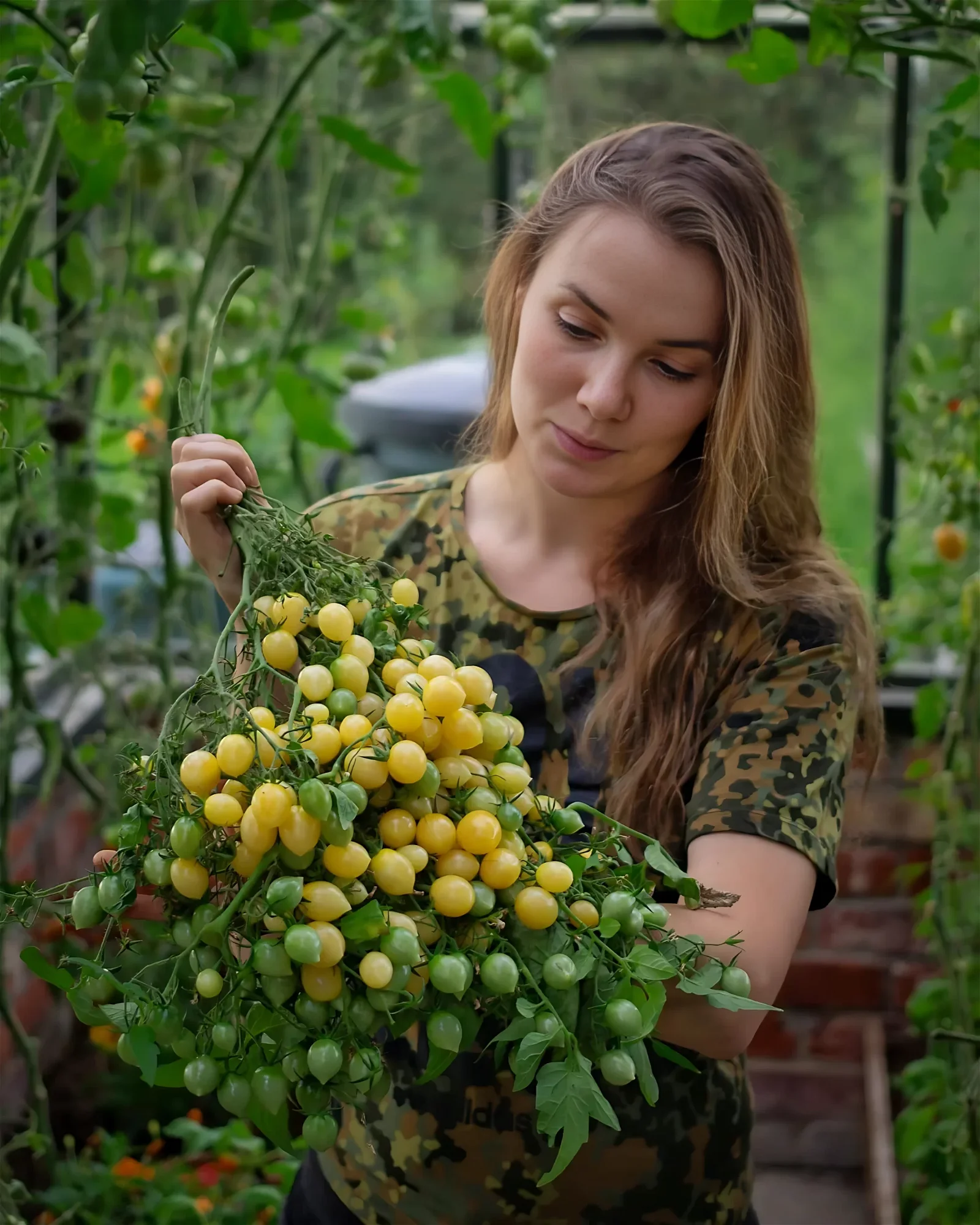Planning to add a bizarre plant to your collection? Boobie Cactus fits the bill perfectly! Here’s all the information about growing it.

The boobie cactus is a great plant for beginners or those looking for a low-maintenance houseplant. It is a type of cactus that is popularly grown for its unique appearance and easy-to-care-for nature!
Botanical Name: Myrtillocactus geometrizans ‘Fukurokuryuzinboku’
USDA Zones: 8 to 11
Boobie Cactus Information
The boobie cactus is a favorite among cacti collectors and novice plant enthusiasts alike. This species of cactus is widely popular for its distinctive appearance and easy-to-care-for nature. This variety is a member of the Cactaceae family and is native to Mexico.
The name boobie cactus is due to its unique, round shape, which resembles a small breast or “boob.” The plant has a green body covered in small, white spines, and it produces vibrant flowers in shades of pink, red, and yellow.
In addition to its aesthetic appeal, booby cactus also has several health benefits. The plant has been used in traditional medicine for centuries to treat a variety of ailments, including fever, indigestion, and arthritis. It is also believed to have anti-inflammatory properties, making it a popular choice for treating skin conditions such as eczema and psoriasis.
Propagating Boobie Cactus
You can propagate the boobie cactus in multiple ways. Here are some of the best.
From Offsets
- Boob cactus produces offsets or “pups” – that can be removed and replanted to grow into new plants.
- Choose a well-draining pot and fill it with a cactus or succulent potting mix.
- Carefully remove the offsets and dry them for a few days to prevent rotting.
- Once the offsets have callused over, plant them in the prepared potting mix. Make sure to plant them deep enough to stay stable and won’t fall over.
From Cuttings
- Choose a healthy, mature boobie cactus plant and use a clean, sharp knife to take a cutting. Make sure the cutting is at least 3-4 inches long and has several spines – now let it dry.
- Plant the cutting in a well-draining cactus or succulent soil mix, burying it about an inch deep, and water it sparingly.
- The cutting can take several weeks to form roots. Once the roots have formed, you can begin to water them more regularly.
How to Propagate Boobie Cactus From Seeds
Boobie cactus propagation can also be done with seeds. It’s essential to obtain seeds from a reliable source or your own healthy booby cactus.
Next, prepare a well-draining potting mix suitable for cacti by combining equal parts of sterile sand, perlite, and cactus potting soil. Moisten the mix slightly to make it slightly damp but not overly wet. Fill small seed trays or pots with this mix, leaving a small gap at the top for watering.
Sprinkle boobie cactus seeds evenly on the soil surface without burying them. Lightly press for good contact. Cover the tray with a clear plastic dome or bag for humidity and place it in a warm, bright spot away from direct sunlight. The seedlings will emerge in a few weeks.
Here are Simple Seed Germination Tips To Grow Every Seed
Best Pot Size for Growing Boobie Cactus

When it comes to growing boobie cactus at home, choosing the right pot size is crucial. Opting for a smaller pot can restrict the growth and development of the cactus, while a larger pot can lead to excessive moisture retention, potentially causing root rot.
A suitable pot size for boob cactus is typically around 4 to 6 inches (10 to 15 cm) in diameter, allowing enough room for the roots to spread comfortably. The pot will suit your plant for 2-3 years, after which you can transfer it to a pot one size bigger.
Here are Plant Pot Sizes from Inches to Gallon
Requirements for Growing Boobie Cactus

Sunlight
Boobie cactus need bright but indirect light to thrive. Direct sunlight can burn the plant, causing damage to its leaves and stem.
If you’re growing your boobie cactus indoors, place it near a south-facing window that gets plenty of sunlight throughout the day. If you’re growing it outdoors, make sure it’s in a spot that gets partial shade during the hottest part of the day.
Soil
Use a well-draining cactus potting mix for boobie cactus. It should consist of a blend of sandy soil, perlite, and cactus-specific potting soil.
This type of soil allows excess water to drain away, preventing root rot.
Learn some Great Tips to Rejuvenate Your Old Soil here
Watering
Water your boobie cactus thoroughly, allowing the soil to dry out between waterings. It’s important not to overwater, as these cacti are adapted to arid conditions. Check the soil moisture by inserting your finger about an inch into the soil. If it feels dry, it’s time to water.
Here are the best ways to water plants
Reduce watering during the dormant winter months. During the summer months, it may need to be watered more often.
Temperature and Humidity
Boobie cactus prefers average to warm temperatures between 60-80°F (15-27°C). It can tolerate lower temperatures briefly but is sensitive to frost.
Provide a humidity level of around 40-50%, which is typical for indoor environments. Avoid placing it in areas with extreme temperature fluctuations.
Here are 10 Ways To Increase Humidity For Houseplants That Work
Boobie Cactus Care
Fertilizer
Feed your boobie cactus with a diluted cactus fertilizer during the growing season (spring and summer). Use a balanced, water-soluble fertilizer specifically formulated for cacti and succulents. Make sure you do not overfeed your boobie cactus, as it can damage the plant.
Avoid fertilizers with high nitrogen content, as this can cause the plant to become leggy. Also, do not feed the plant in winter.
Check out our article on the best fertilizer for cactus here
Pests and Diseases
Boobie cactus is generally resistant to pests and diseases. However, it is still important to keep an eye out for common cactus pests such as mealybugs and scale insects.
If you notice any signs of infestation, gently wipe the affected areas with a cotton swab dipped in rubbing alcohol. Additionally, ensure good airflow around the plant to prevent fungal diseases. Overwatering can lead to root rot, so it’s crucial to maintain proper watering practices to avoid this issue.




